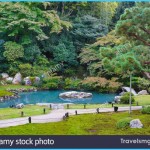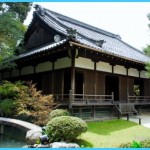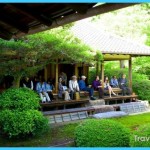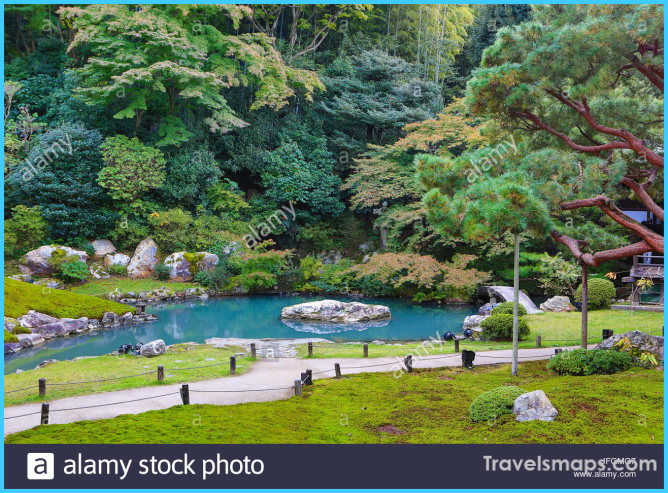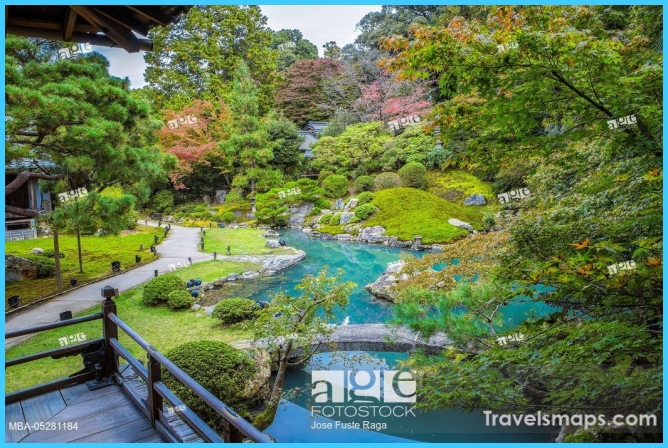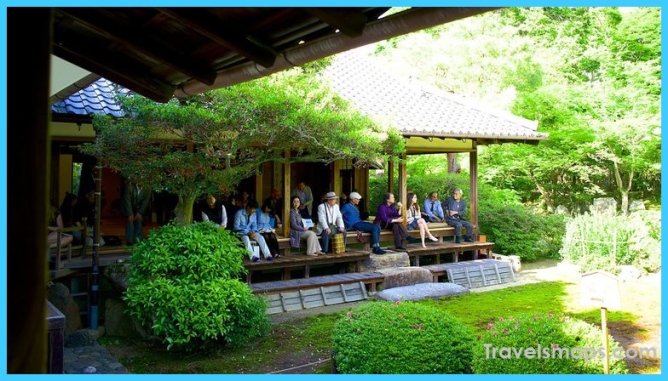Giant 800-year-old camphor trees, which grace the hillside temple’s outer grounds and tower above a quiet stretch of Jingu-michi “Shrine Road,” are the first indication that Shoren-in might be something very special. Yet this 13th-century Buddhist temple of imperial lineage is often overlooked in a neighborhood close to other, more famous landmarks. Within the thick earthen-walled compound of Shoren-in are beautiful gardens created by the aesthete tea masters Soami (14721525) and Enshu Kobori (1579-1647). The gardens are a landscaped divinity flowing naturally around spacious temple halls connected by covered corridors. Shoren-in’s atmosphere is peacefully solemn, but pleasantly welcoming and blissfully relaxed.
Shoren-in Temple in Kyoto Photo Gallery
Built along the foot of Higashiyama’s Mount Awata, Shoren-in’s temple property also includes the mountaintop, with pavilions, a spacious wooden viewing platform, and Shogunzuka Mound. The vast open-air observation deck is Kyoto’s largest veranda and overlooks the distant course of the Kamogawa River and the great green expanse of Kyoto Gyoen National Garden at the heart of the city. The historic Shogunzuka is where Emperor Kanmu is said to have stood atop the mound, gazing down upon the verdant valley basin below, surrounded by mountains to the west, north, and east, and envisioned his new imperial capital in 794.
The legendary mountaintop Shogunzuka Mound shields the city below.
Stately 800- year-old kusunoki camphor trees dominate Shorin-in’s outer garden.
A katomado bell-shaped lattice window at Shijoku-do Hall.
A veritable gallery of painted fusuma sliding doors inside Kacho-den Hall.
Modern gardening techniques for an ancient camphor tree.
Relaxing on corridor steps at Kacho-den Hall.
The garden at Shogunzuka Dainichi-do was designed by eminent Kyoto gardening scholar
Kinsaku Nakane.
Maybe You Like Them Too
- The Best Places To Visit In North America For Christmas
- Faro Travel Guide: Map of Faro
- Mumbai Travel Guide For Tourists: Map Of Mumbai
- Travel to Budapest
- Thailand Travel Guide for Tourists: The Ultimate Thailand Map

